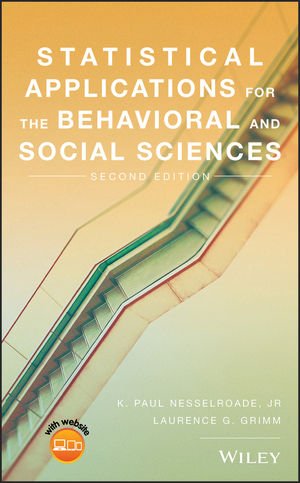(Essay found in Nesselroade & Grimm, 2019; pgs. 379 – 380)

Ronald Fisher (1890–1962) was born in England. He is considered a child prodigy. His daughter and biographer offers the following story.
At about age three when he had been set up in his high chair for breakfast, he asked: “What is a half of a half?” His nurse answered that it was a quarter. After a pause, he asked, “And what’s a half of a quarter?” She told him that it was an eighth. There was a longer pause before he asked again, “What’s a half of an eighth, Nurse?” When she had given her reply there was a long silence. Finally, Ronnie looked up, a plump pink and white baby face framed with waving red-gold hair, and said slowly, “Then, I suppose that a half of a sixteenth must be a thirty-toof.”(Box, 1978, pp. 12–13).
Fisher’s early mathematical ability flourished and led to the development of the most popular inferential test in experimentation: the analysis of variance (ANOVA).
Fisher received his training in mathematics at Cambridge, and subsequently taught math in public schools. His daughter points out that he was a lousy teacher and did not like the profession of an educator. In 1917, he married Ruth Guinness, the cousin of the well-known Irish brewery operators. (We may recall that Gossett developed the t test while employed by Guinness.) When he quit teaching, Fisher was offered two jobs. One offer came from Karl Pearson, a person Fisher disliked because he, as the editor of Biometrica,kept rejecting Fisher’s articles. The other offer, the one he accepted, was from the Rothamsted Experimental Station, the oldest agricultural research station in the world. It was during his tenure here that Fisher made many of his most brilliant statistical and research design contributions.
One of the problems in agricultural experimentation at that time was how to determine the effects of a multitude of variables on plant yields; factors for consideration were soil, fertilizer, weeds, seeds, and weather. Fisher devised several experimental designs suited to answer these questions. The nature of these experimental questions led Fisher to develop the factorial design and the analysis of variance. To appreciate the context within which Fisher was working, it is interesting to note that the article that presented the ANOVA is titled “Studies in Crop Variation. II. The Manurial Response of Different Potato Varieties” (Fisher & MacKenzie, 1923).
Fisher’s contributions were broad. He is responsible for coining many of the common terms in statistics including variance, randomization, and even the term statistic itself. Fisher also worked out many of the sampling distributions required for hypothesis testing and was an influential figure in establishing the 5 percent alpha level for rejecting null hypotheses.
Unfortunately, like many of the other statisticians of that time who were carving out the mathematical tools for the new social and behavioral sciences (e.g., Galton, Pearson, Spearman), Fisher was a strident eugenicist, holding, among other distasteful beliefs, the strong opinion that there were intellectual differences between various races of humans. This conviction even resulted in him registering a dissenting opinion to the United Nations Educational, Scientific and Cultural Organization (UNESCO) project on racism (UNESCO, 1952).
Although the personal beliefs of so many of the pioneers of inferential statistics are offensive, the power of the statistical tools they created should not be diminished by these associations. These tools, though originally created from motives to show differences between races and classes of people, are thankfully not limited to use for those sorts of questions.
Find this and other spotlights on important statisticians in the Nesselroade & Grimm textbook.
Box, J. F. (1978). R.A. Fisher: The Life of a Scientist. New York: Wiley.
Fisher, R. A, and MacKenzie, W. A (1923). “Studies in Crop Variation. II. The Manurial Response of Different Potato Varieties.” Journal of Agricultural Science 13, pp. 311–320.
UNESCO. (1952). The race concept: Results of an Inquiry, p. 27.